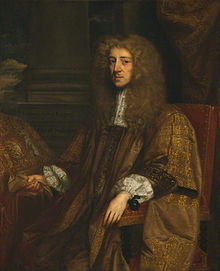
Word of the Day: Cabal
Paul Schleifer
According to www.dictionary.com, cabal means “1. a small group of secret plotters, as against a government or person in authority; 2. the plots and schemes of such a group; intrigue; and 3. a clique, as in artistic, literary, or theatrical circles.” It can also be used as a verb, meaning “to form a cabal; intrigue; conspire; plot.”
According to www.etymonline.com, the word entered the English language in the “1520s, ‘mystical interpretation of the Old Testament,’ later ‘an intriguing society, a small group meeting privately’ (1660s), from French cabal, which had both senses, from Medieval Latin cabbala (see cabbala). Popularized in English 1673 as an acronym for five intriguing ministers of Charles II (Clifford, Arlington, Buckingham, Ashley, and Lauderdale), which gave the word its sinister connotations.” Note that in this etymology, the word intriguing does not mean “fascinating,” as we would generally think of it. It means “engaging in intrigues or plots.”
On this date in 1663, King Charles II, the son of the King Charles who lost his head in disputes with the Puritans back in 1649, signed the Carolina Charter, giving authority over a new colony in the New World, to be called Carolina. The “eight men, and their heirs and assigns, were identified by the charter as ‘the true and absolute Lords Proprietors’ of Carolina. They were to ‘have, use, exercise, and enjoy’ the colony ‘in as ample a manner as any bishop of Durham in our kingdom of England.’ This meant that the Lords Proprietors possessed broad feudal powers to profit from the colony and bore the considerable responsibility of managing and protecting it in the interests of England. They were conferred ‘full and absolute power . . . for the good and happy government of the said province,’ including the power of ‘enacting . . . laws’ (the legislative power), to ‘duly execute [the laws] upon all people within the said province’ (the executive power), and to impose ‘penalties, imprisonment or any other punishment’ (the judicial power)” (http://northcarolinahistory.org/encyclopedia/carolina-charter-of-1663/).
These eight men were “Edward Earl of Clarendon, our high chancellor of England, and George Duke of Albermarle, master of our horse and captain general of all our forces, our right trusty and well beloved William Lord Craven, John Lord Berkley, our right trusty and well beloved counsellor, Anthony Lord Ashley, chancellor of our exchequer, Sir George Carteret, knight and baronet, vice chamberlain of our household, and our trusty and well beloved Sir William Berkley, knight, and Sir John Colleton, knight and baronet.” If you’re familiar with South Carolina, you might just recognize some of these names. County names in South Carolina include Berkeley, Clarendon, and Colleton. “Anthony Lord Ashley” is Anthony Ashley Cooper, 1st Earl of Shaftesbury, and there is, of course, an Ashley River and a Cooper River.
The first settlers of the new colony landed at what would become the port of Charleston in 1670, mostly from Barbados, wealthy planters and their slaves. Eventually, the proprietors would sell their shares in the new colony back to the crown, and around 1729 the northern and southern parts would split into two colonies, North Carolina being a crown colony.
You might wonder who the Carolina was for whom the new colony was named, but you may be disappointed. Carolus is the Latin form of Charles, and so anything with Carolina in it is probably named for one of the two kings named Charles.
Charles II reigned in England from 1660 (the end of the Commonwealth) until 1685. He was king during the Great Fire of London in 1666. He was the king of the Restoration, which introduced female actors to the London stage. I am not sure that signing the Carolina Charter in 1663 should go down as one of the great accomplishments of his reign, but it certainly is an important date for those of us who live in South Carolina. The end of his reign proved somewhat controversial. He did not have a legitimate heir, so he declared that his brother would succeed him on the throne. Unfortunately, James II was a Roman Catholic, and the English did not want to have a Roman Catholic king. James ruled for three years, at which time the English rebelled in what is now called the Glorious or Bloodless Revolution, so-called because it was pretty much bloodless.
One of the lords of England most opposed to James’s becoming king was Anthony Ashley Cooper, 1st Earl of Shaftesbury, who was also a member of the group of ministers in Charles’s court known as the cabal.
The image is a portrait of Anthony Ashley Cooper, 1st Earl of Shaftesbury.